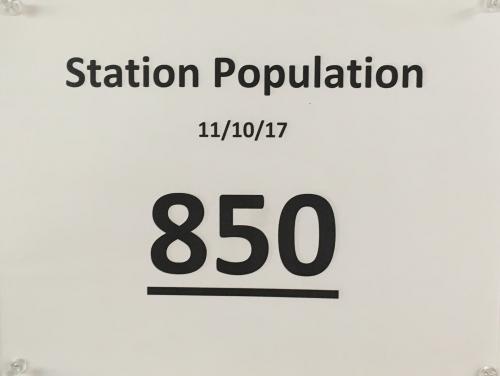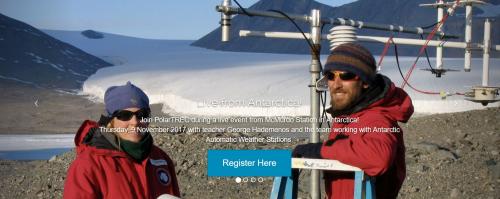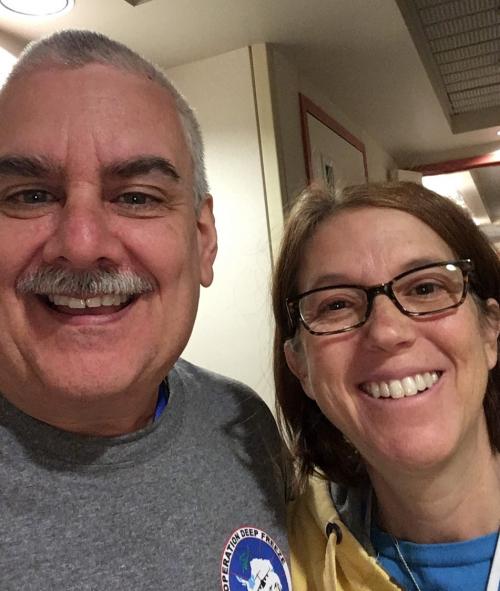It’s a Small World
Wait, I know what you’re thinking. What an odd title for a journal posting! Is this going to be a post related to a Disney movie? Or perhaps it will be a description of a scientific research project involving microorganisms that is being conducted in Antarctica? Although both are reasonable guesses for the topic of this journal entry, you would be wrong on both counts. I chose the title of this entry to reflect a common saying between individuals who upon meeting, realize that they share a linked occurrence years if not decades removed, without either being aware of the occurrence. I apologize for the wordy explanation but it will become clear as you read on.
McMurdo Station in Antarctica has a town-like atmosphere typically inhabited by less than a thousand residents each summer season. In fact, it is common practice to regularly post the number of current residents at McMurdo Station on a public bulletin board in the galley like this one.

One of the best experiences I have had so far during my time at McMurdo Station has been the diverse spectrum of people I have had the pleasure of meeting. I have met other scientific researchers in Antarctic meteorology and in other scientific disciplines/interests, transportation specialists and desk clerks, food servers and dish washers, medical practitioners and fire fighters, and the list goes on. All of them have been wonderful to speak to, are dedicated to their jobs, and have interesting stories to share about how they came about the decision to spend the summer season (approximately five months – from October to February) in Antarctica.
Yet another group of residents that I have spoken with during the first days of my time in Antarctica was the IT (Information Technology) department. Any questions regarding computer login and access, printer set up, assistance with Skype outreach scheduling as well as network-based technology are fielded and addressed by members of the IT department. In fact, of all of the departments at McMurdo Station, I have probably had the most interactions with the IT department.
As a PolarTREC teacher, I am required to maintain a significant presence of educational outreach through journal postings, a PolarConnect webinar open to the general public, and Skype sessions with prearranged classrooms.


Each of these educational outreach endeavors do come with challenges posed by the limited bandwidth available across McMurdo Station and the number of residents who use the internet. Uploading photos to a journal posting (which can involve photo sizes of 2 MB or greater), the rather lengthy time delay in audio transmission for PolarConnect webinars and video streaming requirements for Skype sessions often require the assistance of the IT specialists to help address and resolve these issues. Now that I have explained the importance of the IT department in my responsibilities of a PolarTREC teacher, I would now like to focus on the “small world” aspect of this journal entry.
On my first day at McMurdo, I stopped by the IT department to introduce myself to the staff and then begin the process of finalizing the schedule for my outreach commitments and learning about the equipment required to conduct the Skype sessions. I first met Joni who was my primary point of contact prior to traveling to Antarctica and it is always nice to put a face to a name. I was next introduced to Chan, another IT specialist in the office, and we exchanged pleasantries. And then I was introduced to Mandy. As I was speaking with Mandy, she had asked where I was from and I replied that I was a physics teacher from Richardson, Texas, a suburb north of Dallas. She went on to say that she had lived in Texas – a small town in west Texas named Big Springs. “What a coincidence,” I responded, “I grew up in San Angelo, Texas and Big Springs was 'in my neck of the woods.'” It turns out that she grew up in Big Springs and went to Angelo State University (located in San Angelo, Texas). “That is where I went to school! What a small world!”

Now, you’re probably thinking, “Wow, that’s cool (pun intended) and it is such a small world… but microscopically small? Really?” Well, I am not entirely done with the conversation. When we explored the time frames that she was a student at Angelo State University, it turns out that we were both students at Angelo State University at the same time. Whether we had similar classes together, I do not know. But how incredible would it have been that a college classmate in one of my classes and I could someday meet again over 30 years later in Antarctica! Yes, it is indeed a microscopically small world!
Coming Up Next: The construction of an Automatic Weather Station requires a lot of physical labor and, of course, a little bit of physics doesn’t hurt either. Also, Kiwi has been doing a lot of wondering and returns with another question!


Comments